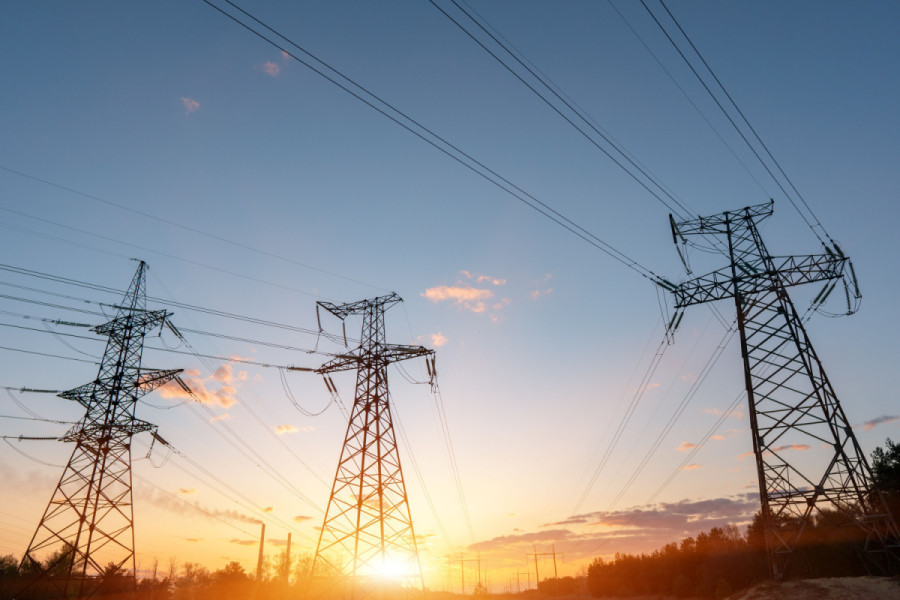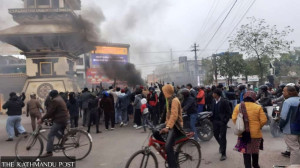National
Government mulls removing hydro capacity restrictions
Such policy will boost Nepal’s power generation capacity substantially as the market is opening up in India and Bangladesh.
Post Report
In a bid to boost power production amid the possibility of exporting power to India and Bangladesh, the Nepal government is preparing to allow hydropower developers to develop projects without capacity restrictions.
Nepal and India signed a long-term power trade agreement in early
January under which the southern neighbour has promised to buy up to 10,000MW of electricity in 10 years.
On the other hand, Nepal is expected to export 40MW of power to Bangladesh in the next wet season initially through Indian transmission infrastructure. Meanwhile, Bangladeshi Ambassador to Nepal Salahuddin Noman Chowdhury recently said that his country has a market for up to 4,000MW clean energy from Nepal.
Currently, hydropower developers are forced to restrict the optimum capacity of the projects because the Nepal Electricity Authority (NEA) signs power purchase agreements (PPA) with the projects that can generate electricity in full capacity for at least 4.8 months, which are known as Q40 projects.
A government-formed committee, however, suggested the NEA to sign PPA with projects irrespective of how long they can generate maximum energy. The committee was formed to suggest policies on PPA.
“We have suggested the NEA to sign a PPA with any project irrespective of the project’s generation capacity,” said Sandeep Kumar Dev, joint secretary at the energy ministry, who headed the committee. “The policy of buying power only from the projects designed as Q40 or more will lead to underutilisation of the country’s hydropower potential.”
As per the Directive on Licensing Electricity Projects-2075, the hydropower plants that apply for survey licence need to be designed on the basis of Q45 (flow exceedance). The Department of Electricity Development charges a licence fee based on Q45 initially. However, the department has been accepting Q40 projects too based on the study of the project and signing of power purchase agreement with the Nepal Electricity Authority, according to the department officials.
The provision of Q45 was included in the directives to prevent hydropower developers from optimising the capacities of their projects to their maximum, which could lead to spilling of generated electricity in the wet season while there would be less electricity generation in the winter.
“The situation has now changed as we are selling electricity to India,” Dev said. “There is a big market and why not make maximum use of our hydropower potential?”
He said that the design of the projects at around Q25 would help the hydropower projects to optimise capacity. According to Dev, their suggestion has already reached the board of the NEA, which is chaired by the energy minister, and it should decide on the matter.
Currently, the NEA has been selling Nepal’s power to India in the wet season with the private sector so far not being allowed to engage in electricity trade.
The state-owned power utility has been selling electricity generated by projects both developed by itself and the private sector.
Currently, India allows Nepal to sell 632MW of electricity in its market. But the southern neighbour has pledged to buy 10,000MW of power from Nepal in 10 years under a long-term power trade agreement signed earlier this month.
Ganesh Karki, president of Independent Power Producers’ Association of Nepal, said that the capacity restriction should be removed to utilise the opportunity to sell Nepal’s power in South Asia.
“Our generation capacity will be enhanced significantly with the removal of the provision so we can sell more power to India and Bangladesh and benefit from it,” he said.
Nepal has the potential to harness over 72,000MW of hydropower across 10 major river basins and their sub-basins, provided hydropower plants are designed in Q40 standards, according to a new study conducted by Water and Energy Commission Secretariat.
“If we design the projects at Q25, we can optimise the projects by 2.5 times,” Dev said.
Currently, the government is preparing a plan to boost energy production and market expansion, with the target of generating over 28,000MW by 2035. “We have proposed removing capacity restriction in this long-term vision document too,” Dev said.
Last year, the government had formed a committee headed by energy ministry’s joint secretary Sandeep Kumar Dev to recommend a power purchase agreement policy and the committee suggested removing capacity restriction.




 8.54°C Kathmandu
8.54°C Kathmandu


.jpg&w=200&height=120)



%20(1).jpg&w=300&height=200)







